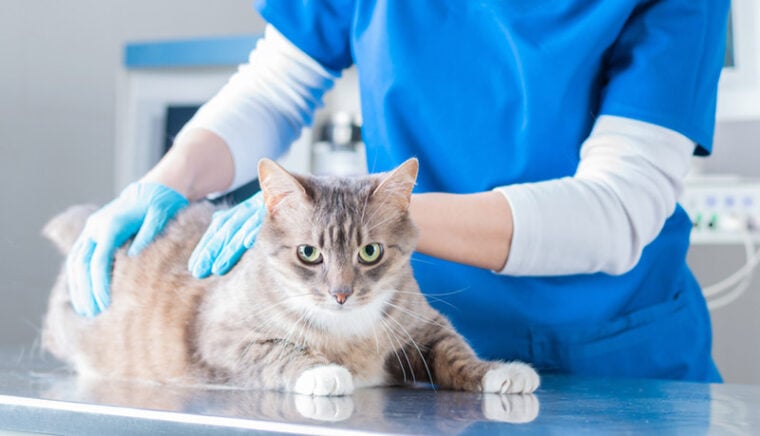
Cats are mobile, energetic, and active animals. Hip dysplasia is a medical condition that limits cats’ movements, making them unable to roam freely.
This disease is not common in cats. It’s mainly a genetic condition that affects the development of the hip joints. External influences, such as nutrition and environmental factors, can also have a negative effect on cats’ hip joints.
Cats suffering from hip dysplasia will experience pain, inflammation, and stiffness. Owners usually notice the signs when the disease progresses and cats can’t hide it anymore (cats are known for hiding their suffering).
Hip dysplasia is not a life-threatening medical condition for cats. There are various treatment options, including surgery, physical therapy, and anti-pain medication.
What Is Hip Dysplasia?
Hip dysplasia is the abnormal development of the hip joint during animal growth. It is manifested by the incorrect positioning of the femoral head in the cavity corresponding to the coxal bone (hip/pelvis bone), either due to an anomaly in the formation of the joint or as a result of abnormal development of the hip components. In other words, hip dysplasia1 is an anomaly of the hip joint in that the femur ball doesn’t fit with the pelvis socket (the acetabulum).1 This medical condition causes damage to the cartilage (the tissue that cushions the bones of the joint).
The direct cause of hip dysplasia is weakness and relaxation of the joint capsule and the ligaments and muscles that stabilize it. In most cases, there is a subluxation or bilateral dislocation of the hip joints.
In the absence of treatment, the affected cats face chronic inflammation and gradual degeneration of the joints. Over time, owners begin to notice that their cats are showing signs of pain in the hip area. There’s often a limp, stiffness of the limbs, and problems with standing up after rest. As the disease progresses, cats will move less and less.
Hip dysplasia is less common in cats than in dogs. It also appears to be breed dependent,2 and the most prone cat breeds are:
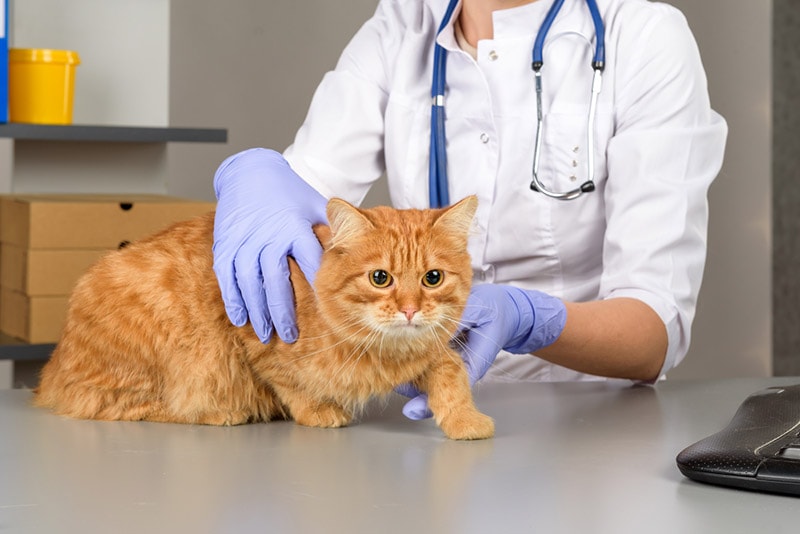
What Are the Signs of Hip Dysplasia in Cats?
At first, cats show no signs of suffering from a medical condition. As the disease progresses, though, the following clinical signs associated with joint degeneration and osteoarthritis may occur:
There may also be an increase in your cat’s shoulder muscles. Cats with hip dysplasia will try to avoid putting weight on their hips due to the pain, which leads to additional work for the shoulder muscles and their subsequent enlargement.
Hip dysplasia is a significant risk factor for osteoarthritis.
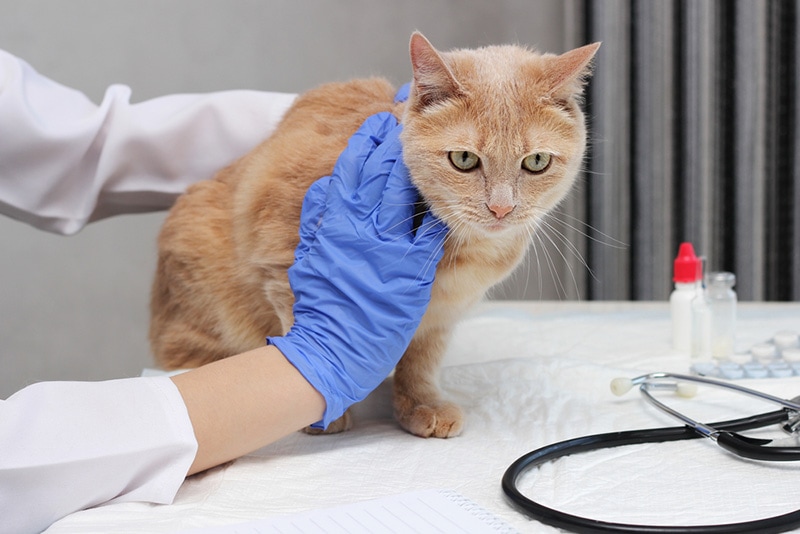
What Are the Causes of Hip Dysplasia in Cats?
Hip dysplasia in cats has no identified cause, though many vets believe that it is a genetic predisposition. The most affected breed is the Maine Coon. Out of 2,708 Maine Coon cats that were taken into a study, the occurrence rate of hip dysplasia was 27.3% in males and 23.3% in females. The youngest cat with hip dysplasia was 4 months old, and severe forms occurred in older cats.
This condition can be unilateral or bilateral, the latter generally occurring in older cats (that develop severe forms). Other factors that play a role in hip dysplasia are obesity and indoor living. Obesity significantly increases the pressure on the supporting structures of the hip, which leads to excessive wear of the hip joint. Correct nutrition plays a crucial role from the first weeks of life.
Other factors that can lead to hip dysplasia in cats are knee problems. These can lead to hip joint damage and increase the stress on the joints. Orthopedic conditions can also cause hip dysplasia to progress, with degenerative changes starting earlier.
The only way to prevent this condition is to avoid mating cat breeds that are genetically predisposed to hip dysplasia.
How Is Hip Dysplasia Diagnosed?
- X-rays
- Special palpation methods that determine the abnormal laxity of the hip joint (also known as the Ortolani test)
The Ortolani sign is an indicator of excessive laxity of the hip joint. Vets recommend the Ortolani test be performed when cats are sedated so their muscles are relaxed and they feel no pain when positioned for the X-rays. Un-sedated cats might try to overcome the test through muscular forces.
A positive Ortolani test involves the perception of a click (palpable, visual, or audible) of the femoral head when performing the flexion movement of the thighs on the pelvis followed by their abduction (pulling to the side).
The radiological examination is crucial for visualizing the signs of hip dysplasia and for a correct diagnosis.
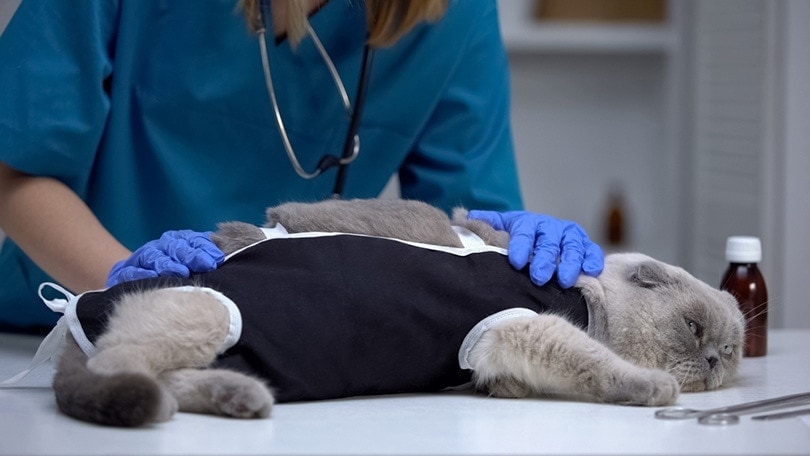
What Is the Treatment for Hip Dysplasia in Cats?
- Maintaining a minimal/optimal body weight
- Doing limited physical exercises
- Administrating non-steroidal anti-inflammatory drugs to reduce inflammation and pain
- Administrating joint supplements
- Doing physical therapy and acupuncture
- Performing surgical treatment
1. Weight Loss
A minimal or optimal weight will help cats not overwork their hip joints. The pressure that extra fat exerts on the joints can wear them out faster and more severely.
2. Physical Exercise
Your cat should not be allowed to do intense exercise. That said, it is usually recommended to walk them in a harness and let them play with toys.
3. Non-steroidal Anti-inflammatory Drugs (NSAID)
Although these drugs help control the inflammation and pain caused by hip dysplasia, long-term administration can cause kidney and liver problems. For this reason, your veterinarian will recommend regular blood tests. The monitoring interval will depend on your cat’s age and the dosage level of the medicine. When the maximum dose is required, the risk of adverse reactions is higher.
4. Joint Supplements
These supplements contain chondroitin and glucosamine, two substances that help support the joints and functional structures, reducing inflammation and pain caused by hip dysplasia.
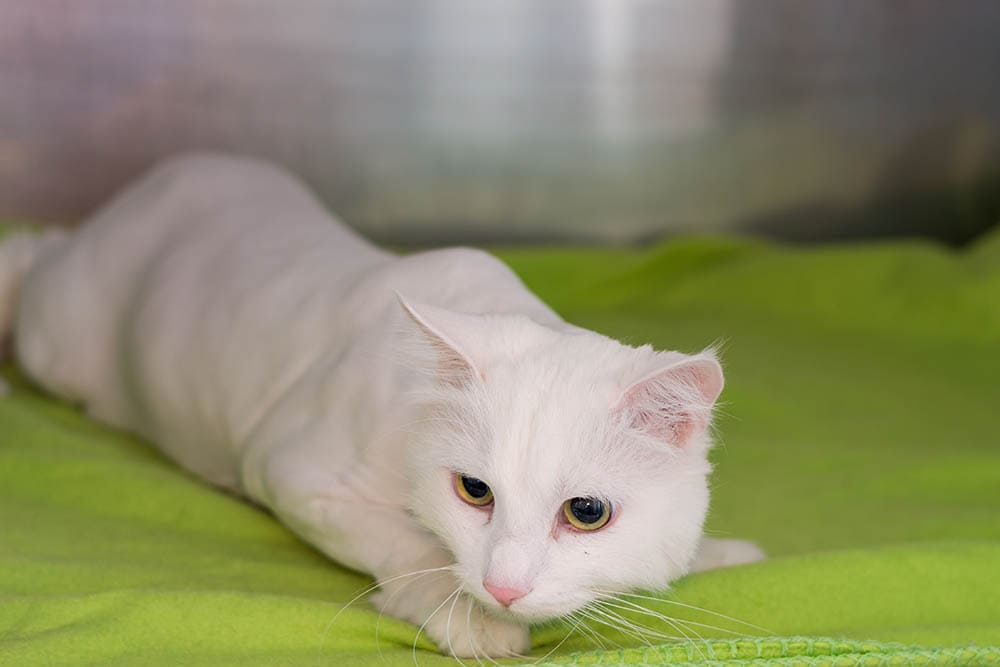
5. Physical Therapy and Acupuncture
Physical therapy helps strengthen muscles, supports weight loss, and alleviates pain. Massage and hydrotherapy (swimming) are the best options for cats suffering from hip dysplasia.
Regarding acupuncture, cats usually tolerate this type of therapy well. The role of acupuncture is to reduce hip pain, improving your cat’s well-being.
6. Surgical Treatment
There are two options for surgical treatment:
Femoral head and neck excision
This is the most common procedure for hip dysplasia in cats and can be performed at any age. Following this procedure, a new false joint will develop with the help of the muscles around the hip. This new joint will transfer the forces from the leg to the pelvis during limb movement. Two weeks after the surgery, your cat will be encouraged to exercise. Your vet may also recommend anti-inflammatory drugs daily for the first 1–2 months post-surgery. Cats that benefit from this treatment will no longer need to take pain medication on a daily basis after they recover.
Micro total hip replacement (micro THR)
In severe situations, your vet can recommend a total hip replacement. This procedure involves replacing your cat’s hip with a new, synthetic one.
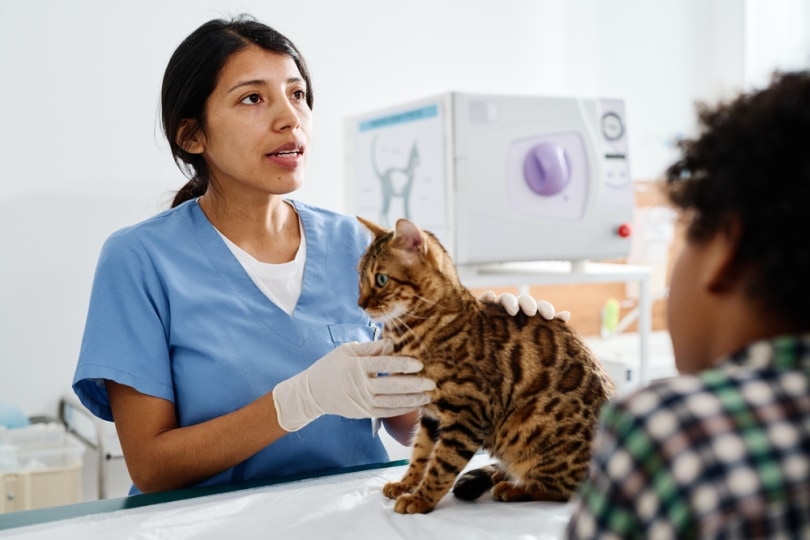
How Do I Care for a Cat With Hip Dysplasia?
First, you must closely follow your vet’s advice regarding your cat’s medical condition. Second, here is what you can do to improve your cat’s well-being:
Frequently Asked Questions (FAQs)
How Do You Prevent Hip Dysplasia in Cats?
The only method through which hip dysplasia can be prevented is to avoid mating cat breeds prone to this medical condition. Since this disease is mainly hereditary, there are no other methods of prevention. What you can do for your cat is to reduce hip wear by bringing them to and maintaining an optimal weight, installing ramps or stairs, buying a low litter box, etc.
How Long Can a Cat Live With Hip Dysplasia?
Hip dysplasia is not fatal, but it can create discomfort for cats because it produces inflammation and pain, which in turn, can lead to reduced mobility and low quality of life. For example, the Maine Coon breed has a life expectancy of 13–14 years, and even with hip dysplasia, they can live a long life. There are different treatment options for cats with hip dysplasia. So, if you suspect that your cat suffers from this condition, talk to a vet about the best treatments.
Conclusion
Hip dysplasia is not a common disease for cats like it is for dogs. Since it is mostly a hereditary medical condition, there are no other prevention methods than to avoid breeding cats suffering from it. The clinical signs worsen as the joint wears out. The more the disease evolves, the more you will realize that something is wrong with your cat. Hip dysplasia is not fatal, and NSAID drugs and hip surgery are the most common treatment methods.
Featured Image Credit: Andy Gin, Shutterstock








